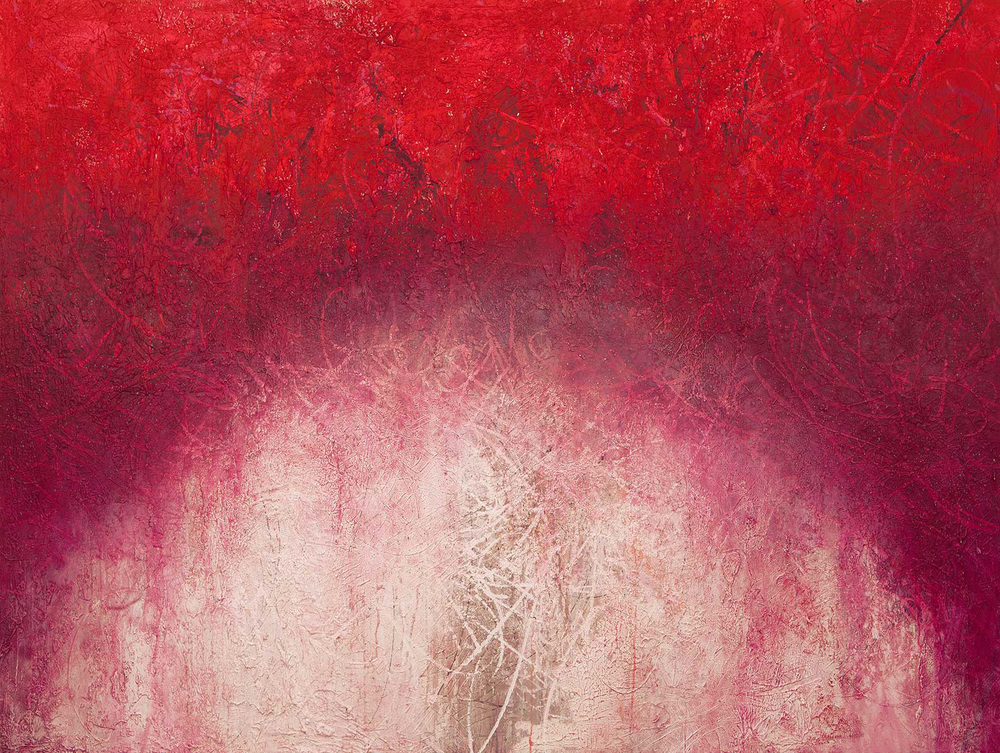
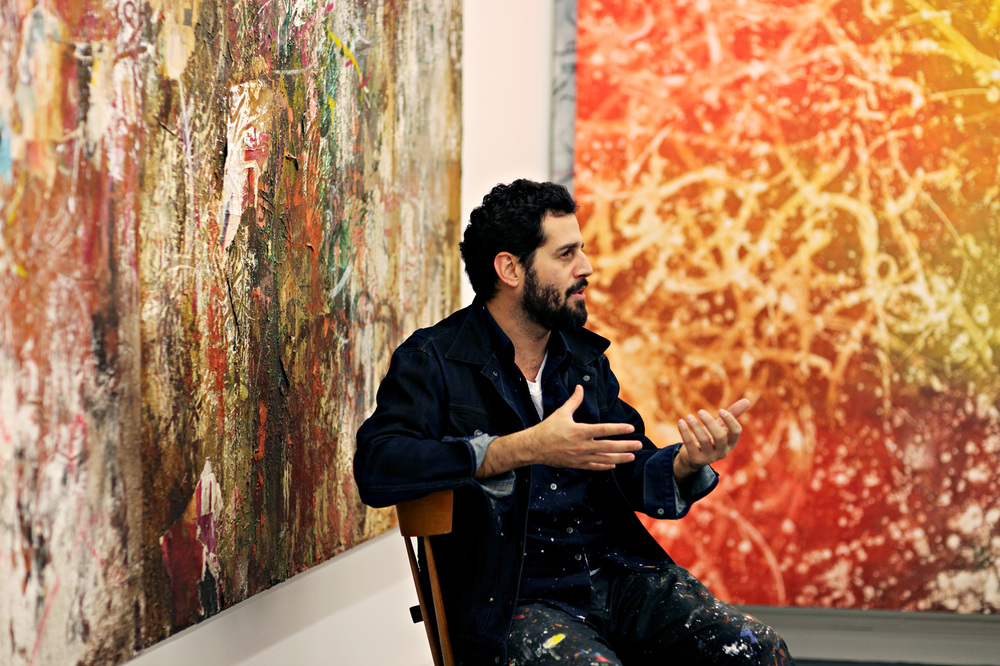
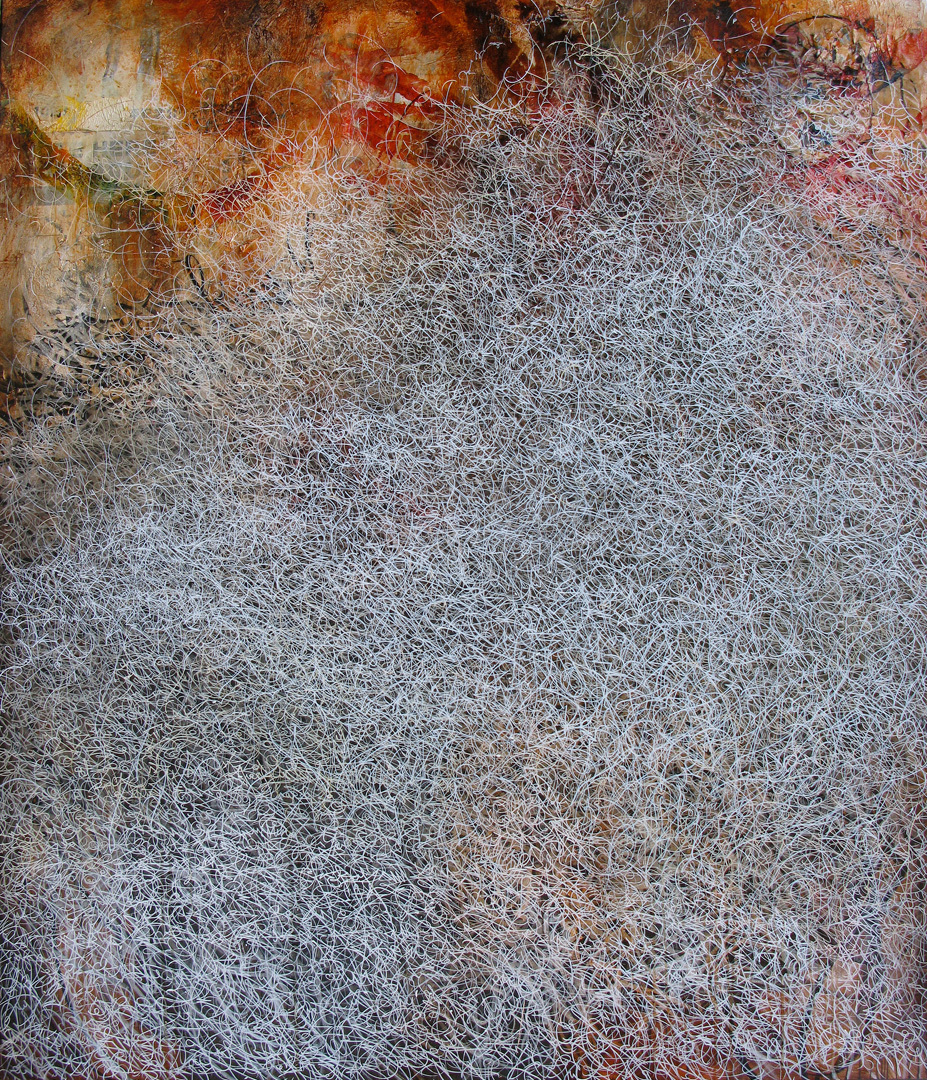
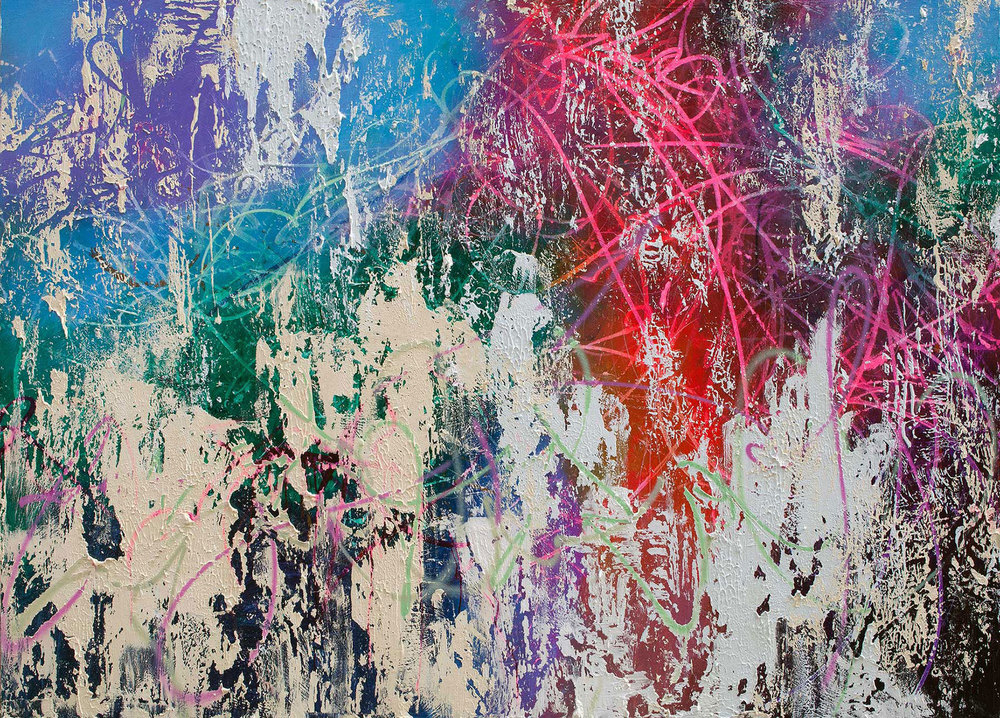
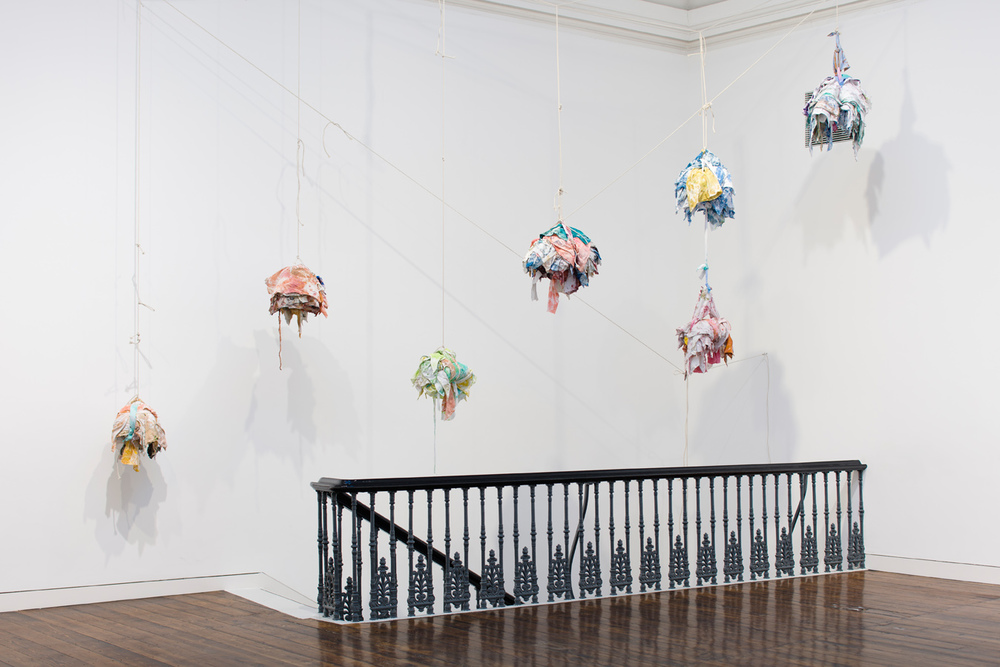
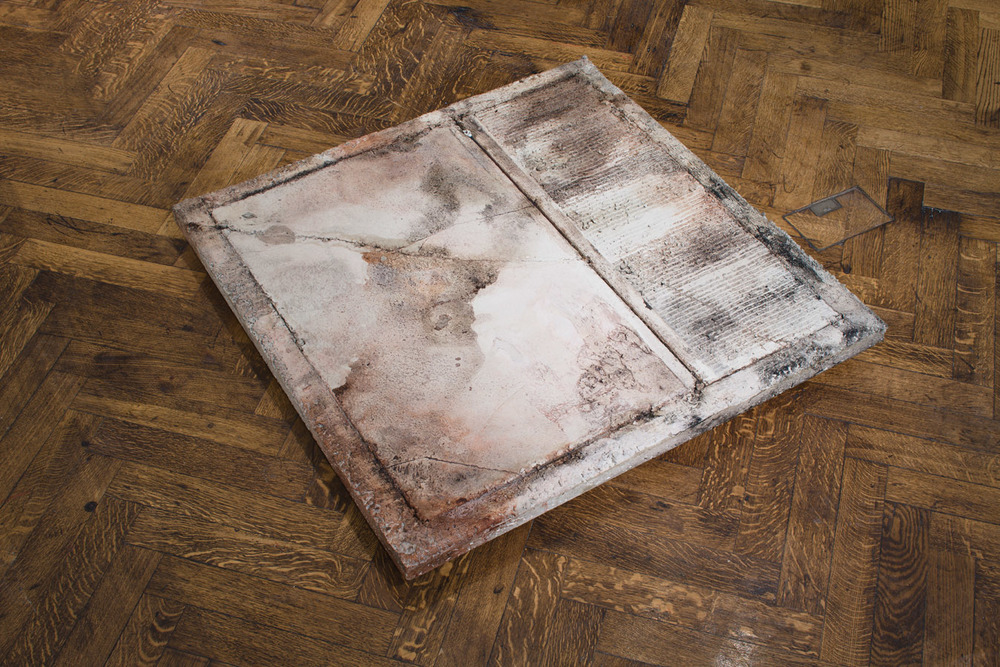
By Vanessa Packer
Photographs courtesy of Jose Parla
THE LAST TIME YOU VISITED THE BARCLAY’S CENTER in Brooklyn you may have noticed a large blue painting electric with a dance of infinite layers of writing and calligraphy. The piece was made by Jose Parla, at the urging of Jay Z, and spans 70 feet along the entrance wall. Born and raised in Miami, Jose developed his style both on and off the canvas, as much of his work today is influenced by his early days as a graffiti artist. Painting, writing, sculpting are the mediums in which Jose works within, as they are often meditative experiences. “Painting has always been a spiritual experience for me. The places I transport myself to always change with the experiences I’m involved in during my daily life” Jose recalls. While he currently resides in New York, the influence of Miami is still strong, as Jose explains, “the spirit of combined collaboration and competition in me comes from the early circumstances that I experienced in Miami.” In anticipation for Art Basel, where Jose’s work is being shown by Bryce Wolkowitz Gallery at Pulse this year, bonberi caught up with the artist to learn more about his process, as well as his favorite spots to visit when in his home city.
When did you first start painting and sculpting?
I have been painting since I was very little and knew I wanted to become an artist through out my teenage years. During high school in 1988, I received a scholarship to study at SCAD in Savannah Georgia where I focused on painting as a major. I had been painting on walls the city of Miami over since 1984 so I had a lot of experience with paint and materials I wanted to bring into my studies. Sculpting came a few years later during the time that I was in college at New World school of the Arts in Downtown Miami and hurricane Andrew basically ripped through the city of Miami leaving debris everywhere so I started to experiment making works with found objects that were left throughout Lincoln Road in Miami Beach. I had my studio at the South Florida Art Center.
Was there a moment where you realized that this would be you profession or was there a moment that you considered yourself an artist?
There is an artist in every one of us. My story now looking back feels complex because I started to paint walls very seriously since the age of 10. There was no real idea in my mind that I would make a living as an artist or that it was even possible. I knew I loved doing it so I did foresee doing it non-stop. There has never been any other choice. Even when I was working a few jobs to pay the bills, I always made art.
Where do you draw your inspiration?
I gather inspiration from just about anything I observe. I pay attention to walls in all of the places that I travel to. I’m always watching people and watching the movement of light reflected onto buildings, the way the sun reflects on certain textures. I watch flowers and tree branches, the colors of walls, torn posters, broken sidewalks, garbage. There are a lot of things that I absorb and bring back to my studio and I combine with the memories of recent events in my life or sometimes-older ones.
How has your perspective towards your craft and towards the industry changed since when you first began making art?
My perspective of creating art is pure and still just as exciting as it ever was in the beginning. I don’t allow the industry to make that change for me because the industry itself was not part of my beginnings and those roots are strongly represented in my visual context. The industry however has grown to the point where it has been able to benefit a great deal of young artist to survive from our works and this is very positive.
You were born in Cuba, and you’ve been back since. What place does Cuba have in your work? How does it influence you?
Cuban culture influences my work even before I went back to visit family or to create projects there. Though I will add that working on the project the Wrinkles of the City Havana Cuba with my friend JR was the best way in sharing my experiences in Cuba and bringing those experiences into my work and sharing the project in an unforgettable collaboration with JR the Havana public and to be able to do something that’s never been done in Cuba. I was born in Miami and also grew up partially in Puerto Rico, both just as dear to me as having Cuban descent.
How has Miami influenced your work?
Miami has influenced by work in many ways. Being a native, and having Cuban roots it’s natural to be influenced by the many aspects of being from somewhere. You can see a lot of the colors that you would see on Miami walls in a lot of my paintings because I’ve always revisited my city. But the biggest way Miami influences me still are with great and also crazy memories. These memories seem to be from another lifetime that I project into my paintings with a tender care and adoration for a difficult time creating art. With groups of friends we started to paint and cultivate an urban intercultural community in the streets against the status quo. The spirit of combined collaboration and competition in me comes from the early circumstances that I experienced in Miami.
What should people not miss when coming down to Miami for Art Basel?
Some of my favorite places to eat in Miami are Garcia’s seafood, Joe’s Stone Crab, and Casa Tua. For shopping the best store is The Webster and also a great space Colette is doing their Drive-Thru at Alchemist in Herzog and DeMuron. I’m excited to see Herzog de Meuron’s parking lot on Lincoln Road. I made something special with Bamford Watch Department for Rolex. The new Perez Art Museum Miami also by Herzog de Meuron. I recommend people to go see the Rubell Family Art Collection the Margulies Collection and also the CiFO foundation.
Do you have any shows or events during Art Basel that you are looking forward to?
Bryce Wolkowitz Gallery is showing two of my works at Pulse this year. And I am looking forward to the opening of the a PAMM as well as seeing the works exhibited at Art Basel Miami Beach and Design Miami.
Your artist statement talks about the spiritual experience you have when you create a piece, and how it is similar to meditation. Could you elaborate on that? What type of spiritual place do you transport yourself to in order to create?
Painting has always been a spiritual experience for me. The places I transport myself to always change with the experiences I’m involved in during my daily life. That is what meditation through painting does for me. One painting like Jaipur transports me to traveling in the Indian city and exploring alleyways and streets and taking photographs of walls and people, while another painting like Neon Spring takes me back to experiences in Tokyo during my Prose exhibition. In particular there is a painting I made while traveling in Tibet titled, Measuring my Thoughts, in which I wrote the words continuously. “Checking my Style, Return to Zero.”

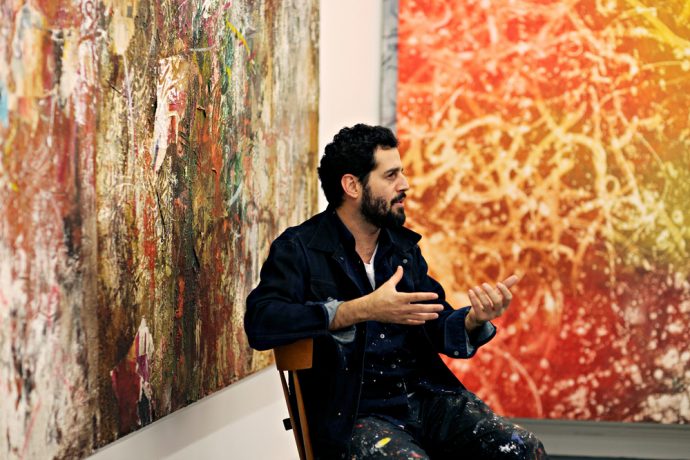
82 Comments